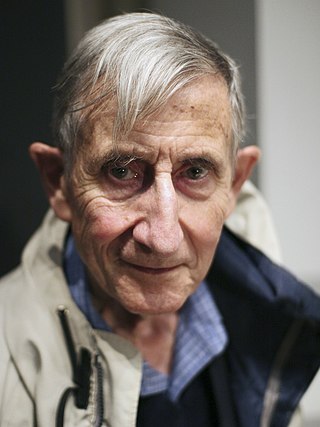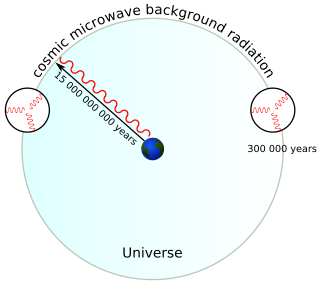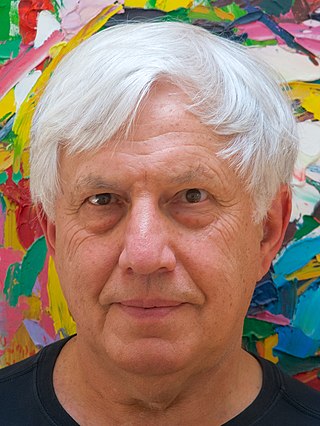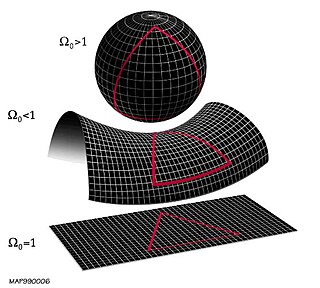Proposed measures

Proper-time cutoff
The proper-time cutoff measure considers the probability of finding a given scalar field at a given proper time . [3] : 1–2 During inflation, the region around a point grows like in a small proper-time interval , [3] : 1 where is the Hubble parameter.
This measure has the advantage of being stationary in the sense that probabilities remain the same over time in the limit of large . [3] : 1 However, it suffers from the youngness paradox, which has the effect of making it exponentially more probable that we'd be in regions of high temperature, in conflict with what we observe; this is because regions that exited inflation later than our region, spent more time than us experiencing runaway inflationary exponential growth. [3] : 2 For example, observers in a Universe of 13.8 billion years old (our observed age) are outnumbered by observers in a 13.0 billion year old Universe by a factor of . This lopsidedness continues, until the most numerous observers resembling us are "Boltzmann babies" formed by improbable fluctuations in the hot, very early, Universe. Therefore, physicists reject the simple proper-time cutoff as a failed hypothesis. [6]
Scale-factor cutoff
Time can be parameterized in different ways than proper time. [3] : 1 One choice is to parameterize by the scale factor of space , or more commonly by . [3] : 1 Then a given region of space expands as , independent of . [3] : 1
This approach can be generalized to a family of measures in which a small region grows as for some and time-slicing approach . [3] : 1–2 Any choice for remains stationary for large times.
The scale-factor cutoff measure takes , which avoids the youngness paradox by not giving greater weight to regions that retain high energy density for long periods. [3] : 2
This measure is very sensitive to the choice of because any yields the youngness paradox, while any yields an "oldness paradox" in which most life is predicted to exist in cold, empty space as Boltzmann brains rather than as the evolved creatures with orderly experiences that we seem to be. [3] : 2
De Simone et al. (2010) consider the scale-factor cutoff measure to be a promising solution to the measure problem. [7] This measure has also been shown to produce good agreement with observational values of the cosmological constant. [8]
Stationary
The stationary measure proceeds from the observation that different processes achieve stationarity of at different times. [3] : 2 Thus, rather than comparing processes at a given time since the beginning, the stationary measure compares them in terms of time since each process individually become stationary. [3] : 2 For instance, different regions of the universe can be compared based on time since star formation began. [3] : 3
Andrei Linde and coauthors have suggested that the stationary measure avoids both the youngness paradox and Boltzmann brains. [2] However, the stationary measure predicts extreme (either very large or very small) values of the primordial density contrast and the gravitational constant , inconsistent with observations. [7] : 2
Causal diamond
Reheating marks the end of inflation. The causal diamond is the finite four-volume formed by intersecting the future light cone of an observer crossing the reheating hypersurface with the past light cone of the point where the observer has exited a given vacuum. [3] : 2 Put another way, the causal diamond is [4]
- the largest swath accessible to a single observer traveling from the beginning of time to the end of time. The finite boundaries of a causal diamond are formed by the intersection of two cones of light, like the dispersing rays from a pair of flashlights pointed toward each other in the dark. One cone points outward from the moment matter was created after a Big Bang—the earliest conceivable birth of an observer—and the other aims backward from the farthest reach of our future horizon, the moment when the causal diamond becomes an empty, timeless void and the observer can no longer access information linking cause to effect.
The causal diamond measure multiplies the following quantities: [9] : 1, 4
- the prior probability that a world line enters a given vacuum
- the probability that observers emerge in that vacuum, approximated as the difference in entropy between exiting and entering the diamond. ("[T]he more free energy, the more likely it is that observers will emerge.")
Different prior probabilities of vacuum types yield different results. [3] : 2 Entropy production can be approximated as the number of galaxies in the diamond. [3] : 2
Watcher
The watcher measure imagines the world line of an eternal "watcher" that passes through an infinite number of Big Crunch singularities. [10]
























